#cooperative care
Text
Learning anything about marine mammal training will make you re-evaluate so much of your relationship with your own pets. There is so much force involved in the way we handle domestic animals. Most of it isn’t even intentional, it just stems from impatience. I’m guilty of it myself!
But with the exception of certain veterinary settings where the animal’s health is the immediate priority, why is it so important to us that animals do exactly what we want exactly when we want it? Why do we have to invent all these tools and contraptions to force them to behave?
When a whale swam away from a session, that was that. The trainer just waited for them to decide to come back. If they flat out refused to participate in behaviors, they still got their allotment of fish. Nothing bad happened. Not even when 20-30 people were assembled for a procedure, and the whale chose not to enter the medical pool. No big deal. Their choice and comfort were prioritized over human convenience.
It’s almost shocking to return to domestic animal medicine afterwards and watch owners use shock collars and chokers and whips to control their animals. It’s no wonder that positive reinforcement was pioneered by marine mammal trainers. When you literally can’t force an animal to do what you want, it changes your entire perspective.
I want to see that mindset extended to our domestic animals.
#‘oh I can walk my dog off-leash down a crowded street’ why does that matter?????#the horse world is ESPECIALLY bad about this too#edit: the whips is referring to horses I have not seen anyone whip their dog#pets#horses#animal training#dog training#dolphin training#dolphins#belugas#orcas#killer whales#cetaceans#marine mammals#zoos#aquariums#cooperative care#vet med#vetblr
1K notes
·
View notes
Text
Teaching Mandana to clean up the sweetgum balls so she can play without stepping on them.
#belgian malinois#3 years#service dog in training#puppy quirks#positive reinforcement#canine enrichment#cooperative care#service dogblr#dogblr#rental house#rental#yard work
92 notes
·
View notes
Text


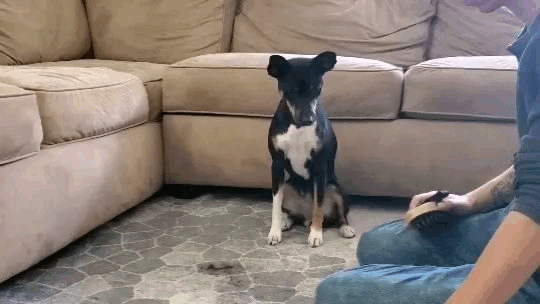
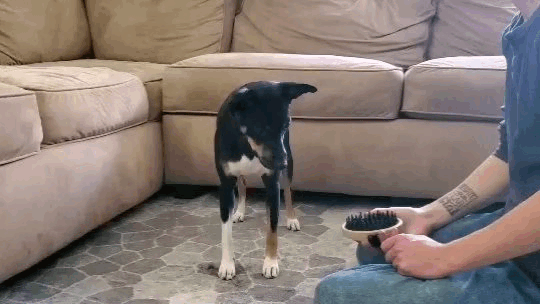
Paw-brush-treat-reward-repeat.
#as with every other thing#I haven't properly sat down to work on consent#it's been worked into a lot of maintenance things but isn't followed strictly bc stuff needs to happen one way or another#I am very happy with how much of her grooming is restraint free#she hates baths but will still jump in the tub#she's wiggly for the dryer but it's because she presses herself up against the nozzle#our only real issue is nail trims#she gets scooped for those and I don't blame her#she's pretty good for teeth brushing too#anyways this is a fun behaviour because she has now pawed for continued pets#where as she used to only paw when she wanted to be under a blanket#turnpike#gifset#I love little pointless posts about my little dog <3#cooperative care
50 notes
·
View notes
Text
I’m very passionate about cooperative care and I will never shut up about it
991 notes
·
View notes
Text
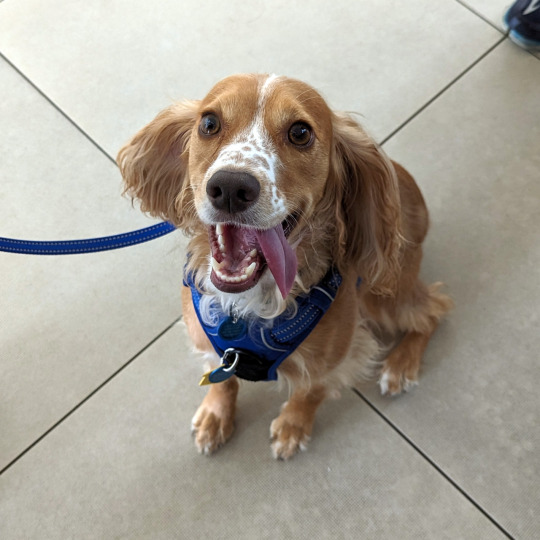
Guinevere had a followup at the hospital. Her last visit in July was long and stressful. We expected this visit to have a lot of quiet waiting but not so much added stress. So I brought supplies to try to make the waiting better, and reduce overall stress for future trips. Indeed, right after we got there, Guinevere was already ready to bolt for home, or possibly just blindly into traffic.

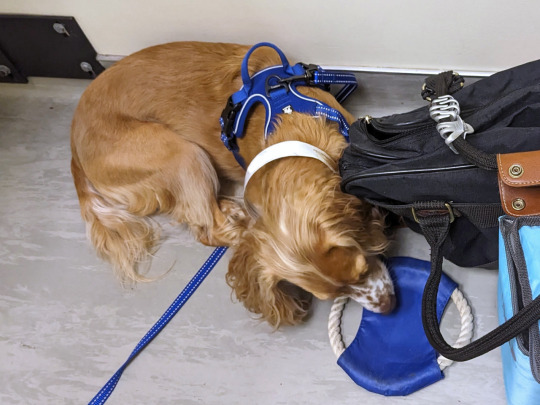
The rope disc is one of Gwyn's current favorite activities, so once we were waiting alone in a room, we played some frisbee. Gwyn brightened up and relaxed significantly, even taking the frisbee to go lay down for a while.


Then Gwyn got bold enough to investigate my supplies bag, and found the hat I brought, too. First she played with the pom-pom and ties for a bit, then I put it on her and took it off several times (with appropriate treats).
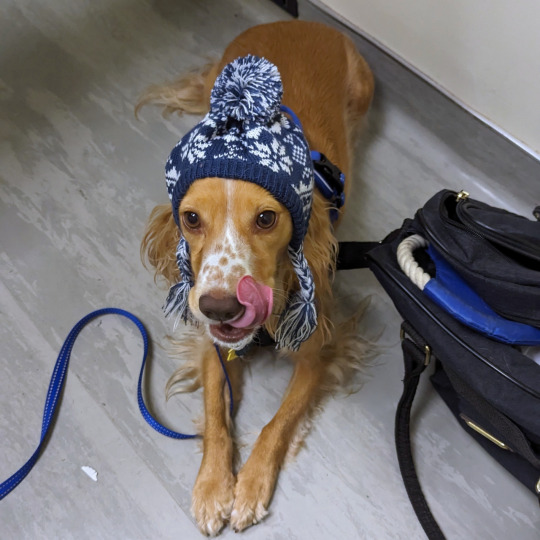
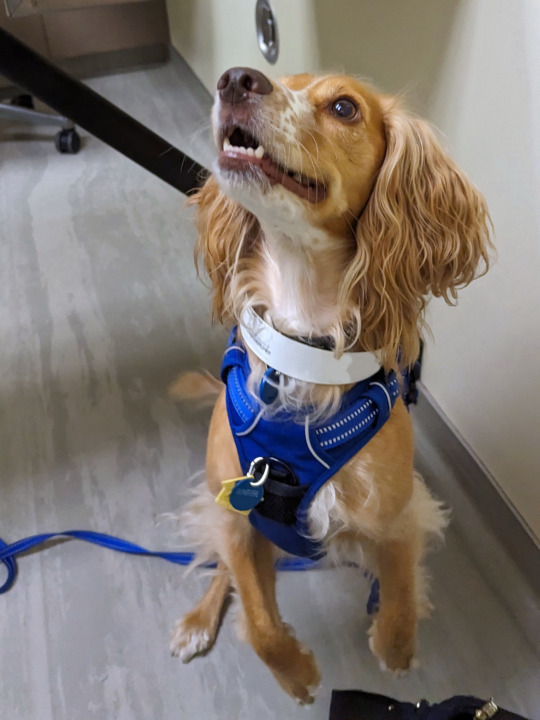
By then Gwyn was feeling much calmer about being in a strange place with a history of stress, and began investigating the room too. Ridiculously adorable!


Because Gwyn's last visit was awful, the vets wanted to muzzle her for part of her exam. They were happy to move slowly, give treats, and wait for Gwyn to be comfortable at each step; they just also needed to reduce their own risk, entirely reasonable. We had just practiced "hat," of course, so I reminded Gwyn several times that other things go on her head and come back off just like hats, then buckled the muzzle while giving lots of treats. Once the exam was done, we practiced one more time taking the muzzle off (good girl!), putting it back on (lots of treats!), and taking it off again (good girl!).
We return home with a slightly refined medication/food regimen, and we're going to go back to discuss her complete diet (mostly, soluble/insoluble fiber supplements & also added treats) with the nutritionist because it's a complicated issue.
#guinevere#cocker spaniel#dogblr#vet visits#cooperative care#distraction & relaxation#shameless bribery ftw#flying discs#dogs in hats#mlem#sidetongue#Spaniel Eyes#meerkat#muzzle training
65 notes
·
View notes
Text
My fearful reactive Juni just got the last of her yearly vaccines using cooperative care!! 🥰 Super proud of her, and grateful to our Fear Free certified vet for working with us to achieve this.
84 notes
·
View notes
Text
Stoli and I had a good cooperative care session 1 & 2 😊
Yesterday I got the training space set up and we did a very brief introduction to the table and chair. There is a chair beside the table to allow him easy on and off access, and a yoga mat in front of the table/chair to allow him a non-slip surface to land on when he gets on and off.
Yesterday's session 1 was simple: if you interact with the chair or the table, you get spoonfuls of yummy baby food.
Stoli didn't feel comfortable doing more than putting his front feet on the chair, but that's okay. It was session 1, and all we are doing is building a strong positive emotional response to the training area. The only requirement for him was to interact with the chair or table in some fashion. I did some gentle encouragement to see if he would get on the chair or table but he told me he wasn't ready yet by disengaging and sniffing other areas of the room. When he was ready to engage again, I took a step back and showed him that I understood his feedback and didn't pressure him.
Today's session, EVEN with it being only session 2, and EVEN though we didn't seem to make any real "progress" yesterday*, Stoli understood the assignment and made a HUGE step forward by willingly getting onto the table by the end of the session with only gentle encouragement!
I will be uploading the video to YouTube along with a voiceover, so I won't go into more text detail here.
As a log for session 1, here is the photo of the training space 😊 the eventual goal is for foam tiles on the floor and a better organizational set-up for grooming supplies. I'll also be hanging some photos of Layla & Stoli along with their ribbons.


*(we did! But impatient people may not consider it that.)
34 notes
·
View notes
Text
many of the angles are unideal but on my own it’s what I can get. both sides, you can see he’s preferring to pace and very reluctant to move faster. I don’t like his right hind in particular but overall suspect something is up in his hind end.
10 notes
·
View notes
Text

Tried these as a nail trim reward today and it was a BIG hit. Sigurd even let me do all his nails without the aid of the scratchboard which was amazing. They don’t smell as bad as you’d think either.
#dogblr#dog gear#cooperative care#when Sigurd gives me his paws willingly for nail trims my heart bursts with pride#he has very sensitive/tickling paws so trimming has always been difficult for him#but he’s come a very long way over the years#cloud star wag more bark less smoked salmon gourmet jerky
26 notes
·
View notes
Text
I have bought two books-- Cooperative Care by Dr. Deborah Jones and Hunting Together by Simone Mueller.
The Goal for the first book is to get Zaku more comfortable about having his head handled, and more comfortable being sprayed with a hose or shower head. He also needs to learn to be blow-dried.
For the second, the Goal is to continue working on crittering. I did a speed-skim of the book last night and implemented one of the recommendations this morning (food scatter to bring down energy) and already saw a positive change.
I'll also implement stuff from both books for Kermit, since there's no reason not to. It could be really helpful for vet visits, since Kermit is usually quite growly when being examined. I'd rather he be more relaxed.
#my training#cooperative care#hunting together#I'll add updates when/if I remember#if anyone is interested
10 notes
·
View notes
Note
May I ask what Cooperative Care is? I don't think I've heard of it yet
Of course!
So here's a commonly used definition given by the International Association of Animal Behavior Consultants:
"Cooperative care involves training an animal to not only tolerate handling and husbandry procedures, but to be an active, willing participant in these experiences."
So for a basic example... Beyond teaching a dog to passively let you trim its nails, you can teach it to cooperate and help out by, say, offering it's paws to you in turn. Or teach a dog to help stay still during brushing by resting its chin on a chair while you brush it.
Cooperative Care doesn't just involve fancy trained behaviors though. It also involves letting the animal say yes or say no to what's happening. And this is the part where a lot of people get anxious about practicing cooperative care. They believe that if you let your dog say "no" then they will always choose no. But the thing is that most of the time this doesn't happen because having an option to opt out makes an animal trust the process a lot more. They feel safer because they know if they get overwhelmed then they can stop. So this actually means they are more likely to say yes because they know they can say no when they need to.
I explained to my class at the start to imagine if you were going to the hairstylist and once you were there you were trapped until the entire process was over no matter how badly things were going or you were feeling. That would be awful, right? But we can communicate when we need to leave or when something doesn't feel good and unless you have a terrible person, they will make the needed changes and we are fine finishing the ordeal. If we allow our dogs to communicate with us that something is off or too much then they too will often be fine.
For me, cooperative care goes beyond veterinary and grooming procedures and applies to all the ways I work with a dog because truly cooperative care is about the emotional well-being and state of the animal. If Tzapo is having an off day for whatever reason, I take notice of this and make the needed adjustments to our training routine for the day. If a dog in my class is not feeling it then they get space until they are ready. In the cooperative care class I teach, we had a great example in class where one dog wasn't able to do the activity we were practicing. He didn't look overly amped to his person so I came to check out what was going on. I realized he was definitely getting really too amped because he was taking treats way too hard. I explained this to her and asked her to take him out to sniff then come back in and practice some of his really easy cues for a few minutes. After this he was ready to re-engage with what the rest of the class was working on just fine, but he needed to have his emotional needs addressed first. Once he was in the proper emotional space then the rest of class was fine. Today in one of my group classes, the dogs were definitely feeling really restless because adolescent dogs are just Like That. So when it came time to practice some building blocks for heel, I had them practice this by moving around the room and stopping at each mat to sniff. This allowed them to meet each other in a low excitement way and they were able to calm down and focus without ever having to come face to face since that would have just amped them up more. So taking that emotional state into account and addressing it appropriately made for a successful training session for all instead of potentially poisoning a cue to heel when they weren't ready for that behavior.
Hopefully that makes sense!
37 notes
·
View notes
Text
Coop boot work with Yo
We always aim to make it an non stressful experience but it’s one of those necessary evils that always hits a point in the year where the discomfort wearing them outweighs the good and she becomes averse to them. So I’m redesigning our routine around them this year and really happy so far.
First session with the new routine and she’s really grasping the new concept. If she lifts her head off the ground the boots come off and she gets a break until she re-opts in. If she doesn’t opt back in then we stop for the day.
Got one full boot on with no stress signs, opting in, and maintaining her head down for the whole application. She lifted it a bit early at the end here but I think she was just anticipating the cheese 😂
12 notes
·
View notes
Text
I was finally able to set up Mandana’s exercise equipment. She was so happy to get on her treadmill for the first time in months. She even got to pretend she was chasing the mailman who came to our door 😂
#belgian malinois#3 years#service dog in training#service dogblr#dogblr#malinois meme#so you think you want a malinois#puppy quirks#canine conditioning#cooperative care#positive reinforcement
49 notes
·
View notes
Text
What a good baby dog.
4 notes
·
View notes
Text
Session 21?
Started wing handling today, began the session just presenting my hand and rewarding any movement towards it. Newt already likes to "cuddle" in my hand by pressing his back up against it so we aren't working with fear responses and he has the basic understanding that curling in to my hand is fun and enjoyable.
Ended the session with me presenting my hand, Newt running right in to it and allowing a partial wing extension. For harness application I'll only need to lift the closed wing, not open it but he was having so much fun I decided to see if he'd let me open it at all. It'll be helpful for veterinary exams to have that skill so if he's willing I figured I might as well try!
For this one I'm aiming to utilize true cooperative care practices with start and stop buttons (behaviours Newt can do that will trigger me to start touching him, and a behaviour he can do to get me to stop touching him). Parrots can be very quick to bite, rather than have Newt need to bite me to tell me I went too far I'm providing an alternative behaviour for him to preform that will predictably result in me stopping the handling. If he has tension on his wing, pulls it away, or walks away (stop button) he gets a treat for the attempt and I remove my hands for a moment to give him space to reset. I'd rather him walk away and know I will stop rather than him feel like he has to nip or bite to make me stop.
For his start button behaviour I present my hand a distance away instead of reaching for him. He gets to press "start" by rolling his back, in to my hand. If I present my hand and he doesn't roll in to it then I take my hand away and do some simpler fun behaviours instead. Usually after that short break he'll opt back in to the wing handling. This way Newt is fully in control of when the touching happens, I'm not accidentally pushing past his boundaries or forcing him in to the handling by reaching for him. He has to say "okay! I'm ready! I WANT to do this!" which helps ensure he's actually enjoying the handling instead of tolerating it for the sake of a treat.
168 notes
·
View notes
Text
Kind of annoyed there are no vets available in town who isn't afraid of hunting spitzes, livestock guardian dogs and other similar breeds.
Feels like I'm back to the stone age when everyone in town is scared of a Shiba Inu. Then some guy from Germany who practiced in Norway was the first person who knew how to treat our dog without using force, sedation or restraints. He was pretty experienced in handling grumpy spitzes.
Zarya is okay with most people as long they're not afraid of her and they ask for consent. But for some reason the vets and vet techs are scared, and she picked up their energy and react accordingly.
5 notes
·
View notes